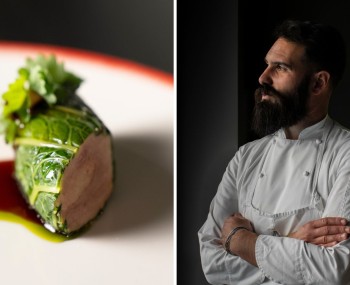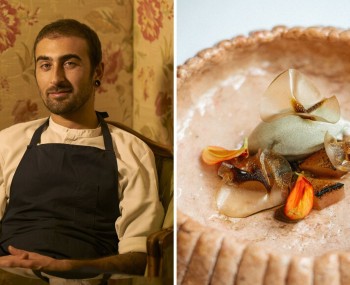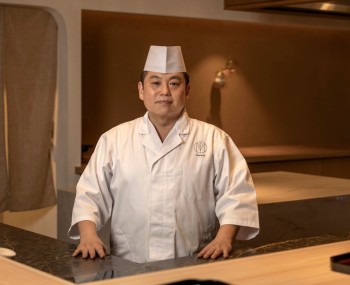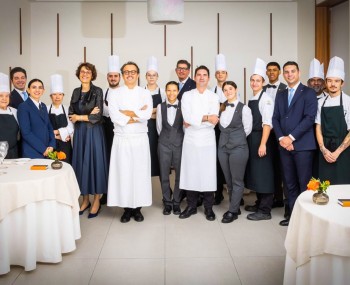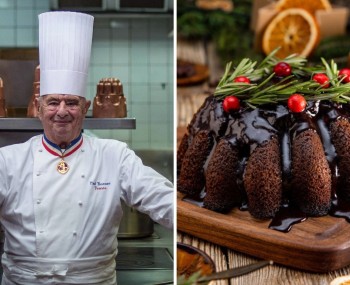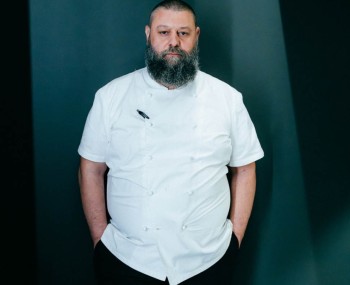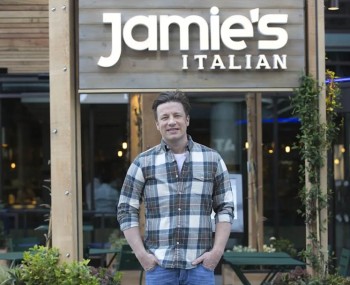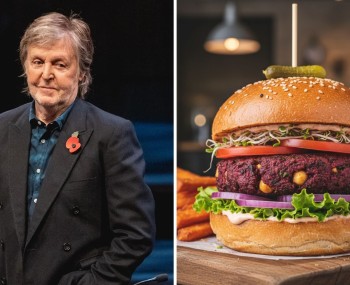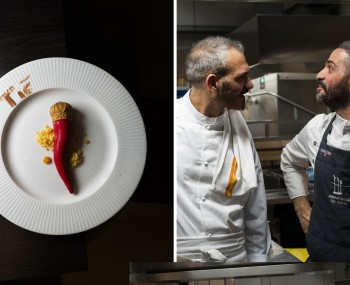"Outside an historical building, inside a New York loft. In the kitchen, a chef who brought a Michelin star to Crema, the only one in the province of Cremona. Vitium is Michele Minchillo's successful experiment, a young restaurateur with a talented hand."
The story
Attending Alberghiero in Vieste wasn't enough. Dissatisfaction didn't lead to giving up. Quite the opposite. Someone like Michele Minchillo is silent energy, power with absolute control. He sets himself the goal of earning a Michelin star by the age of 30.
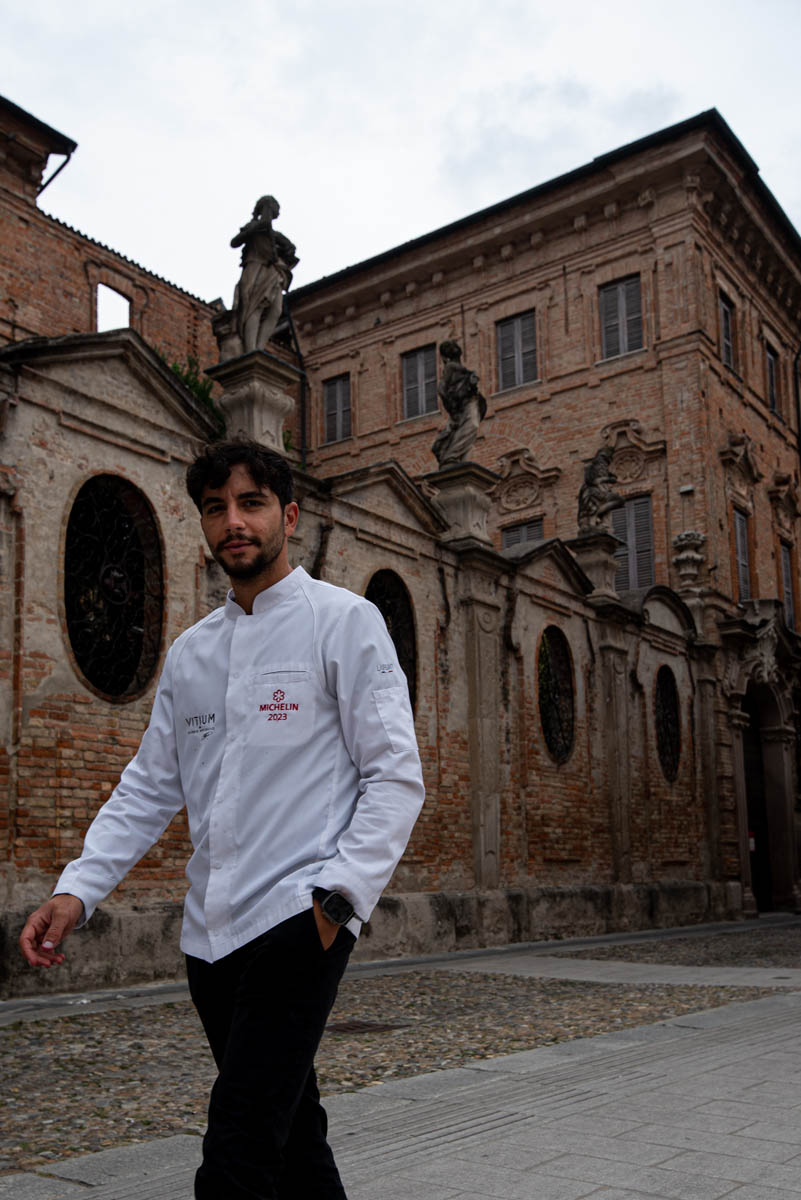
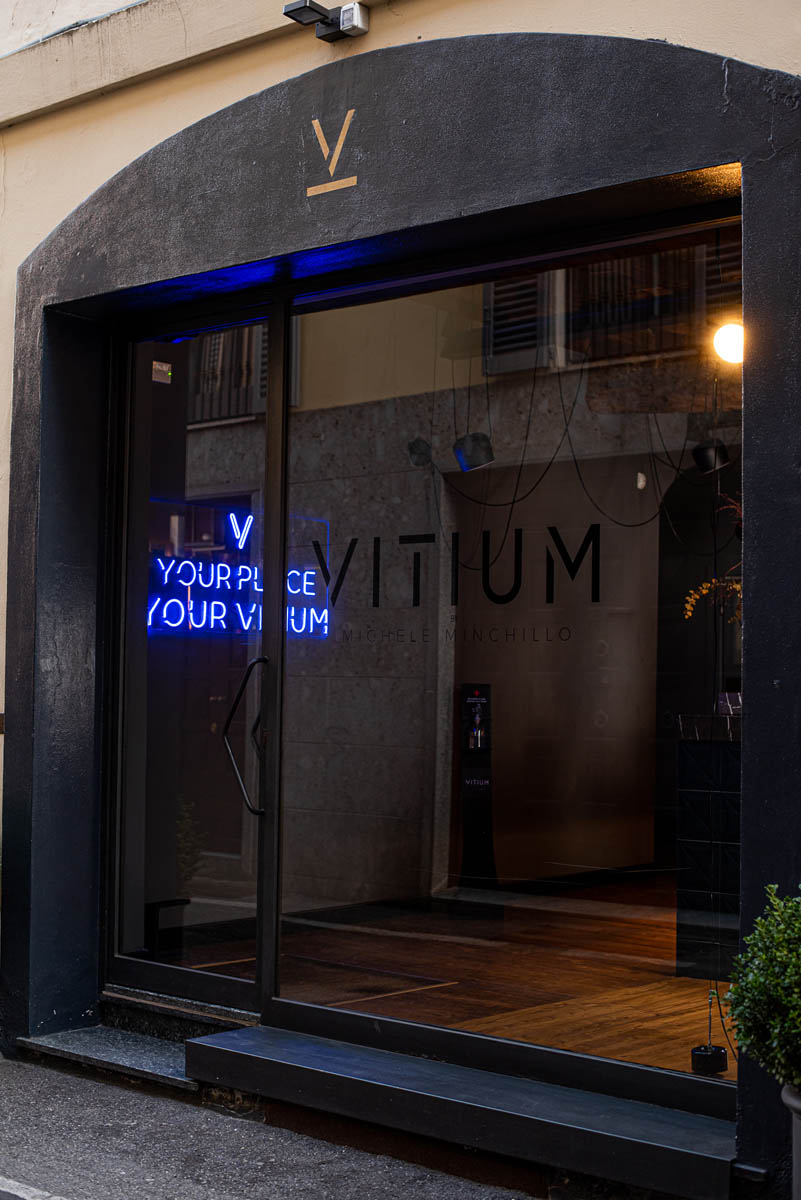
And what do you think, how did it go? He earned the Michelin star a year earlier than expected. Want to know something? The dish mentioned in the Guide - Cacio e pepe, shrimp, and lime - wasn't the one that impressed us the most. The "red" inspectors didn't make a mistake, they were calm. In a small provincial town that, just based on geographical data, you should be thrilled about, Crema, they honored a restaurant that fulfills everything that satisfies their algorithm, their machine learning, which is starting to become a bit limiting for us, not to mention for the restaurateurs and chefs.
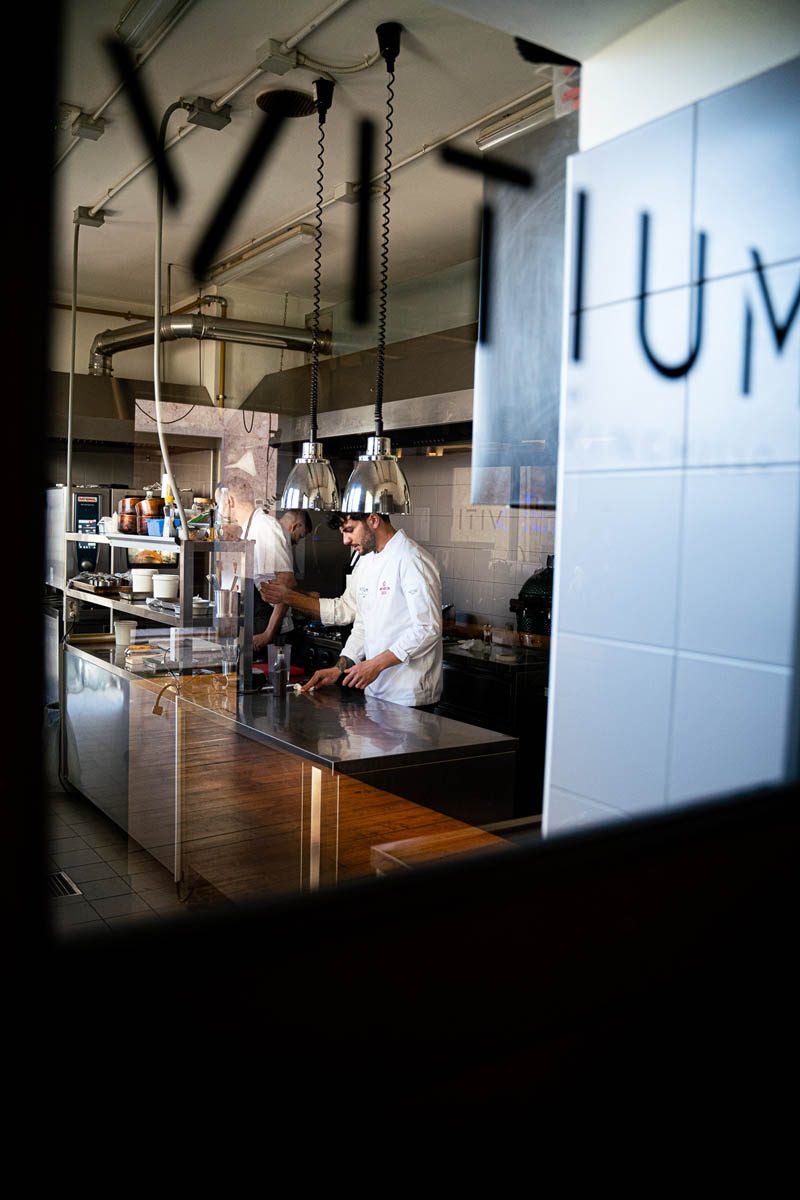
Well, considering the compromises of what's needed to earn that red plaque on the wall, Vitium offers technical cuisine, traditional cuisine, indulgent cuisine, and a cuisine of discovery. 'Being a show-off? I'm an entrepreneur, not a salaried chef. The answer is already there. I can't overdo it; I can't make overly acidic dishes or those dominated by rancidity."
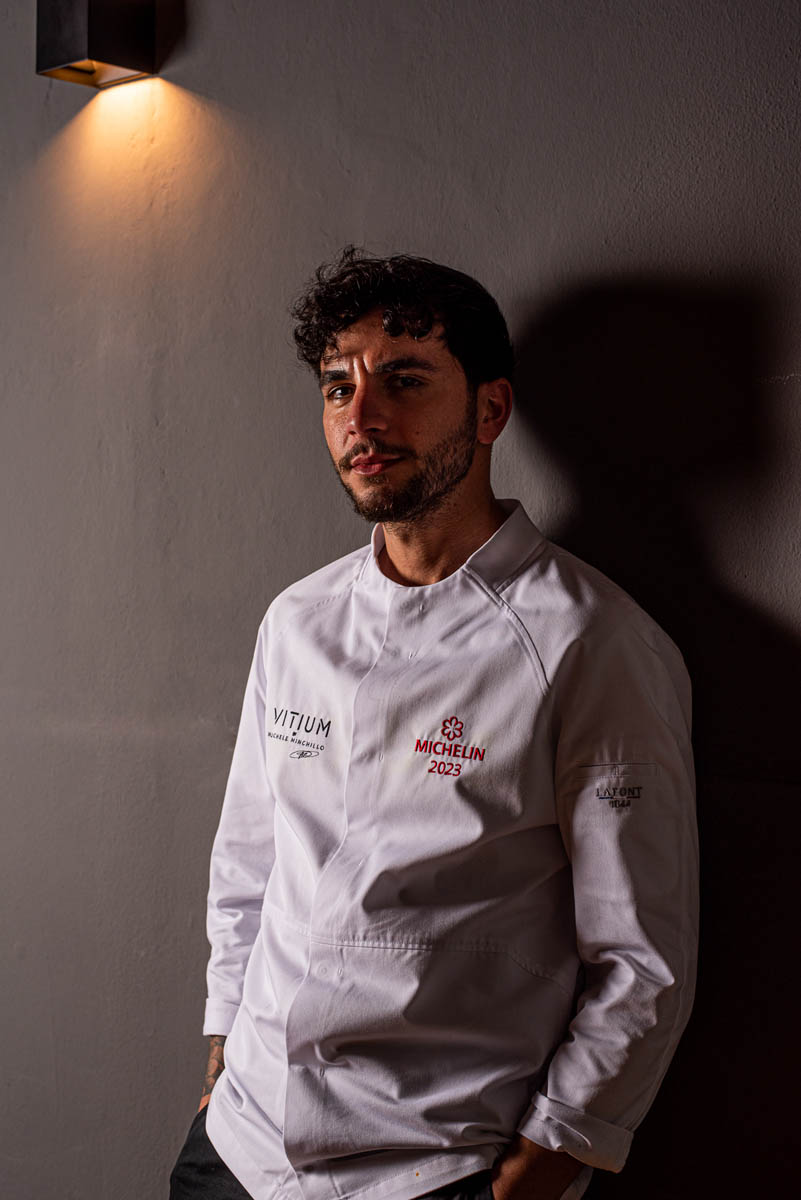
With COVID in the mix, closed for over a year, the star was on the agenda, but we didn't expect it so soon. In November 2021, they included us in the Guide, and a year later, we got the star. The guys told me it was coming, and I told them to stop. They were right. The traffic increased. At the beginning, we had empty Fridays and Saturdays, I'm not ashamed to admit it. Even now, it's not automatic for people in the area to enter my restaurant, despite my cuisine being understandable and delicious. People around here are skeptical, and even the authorities haven't fully grasped how having a Michelin-starred restaurant can be a source of income and a valuable asset for tourism promotion. The majority of our customers come from outside the city. What I appreciate is that many young people under 30 come.'
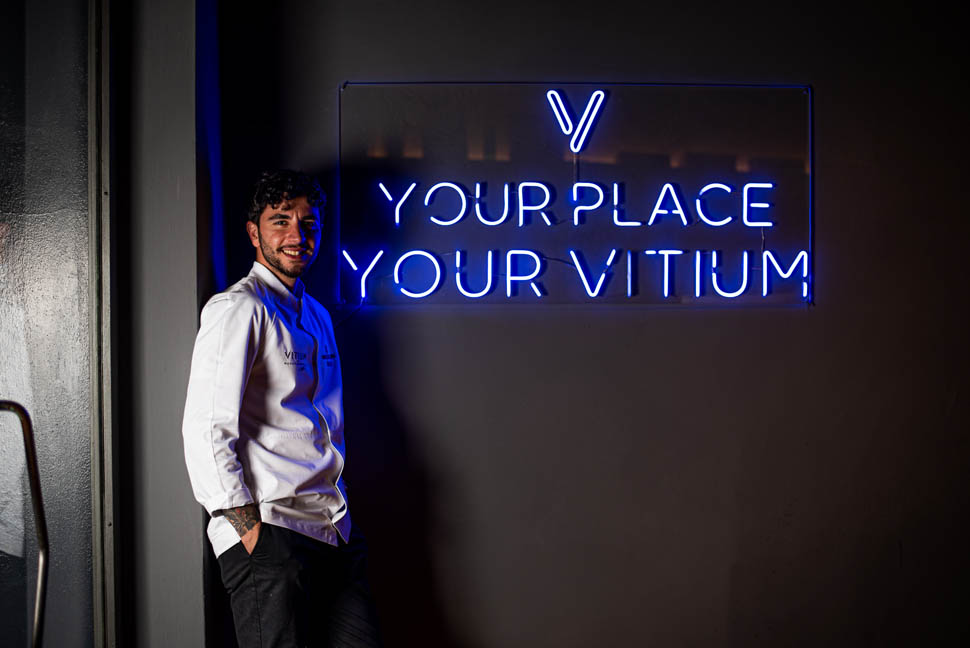
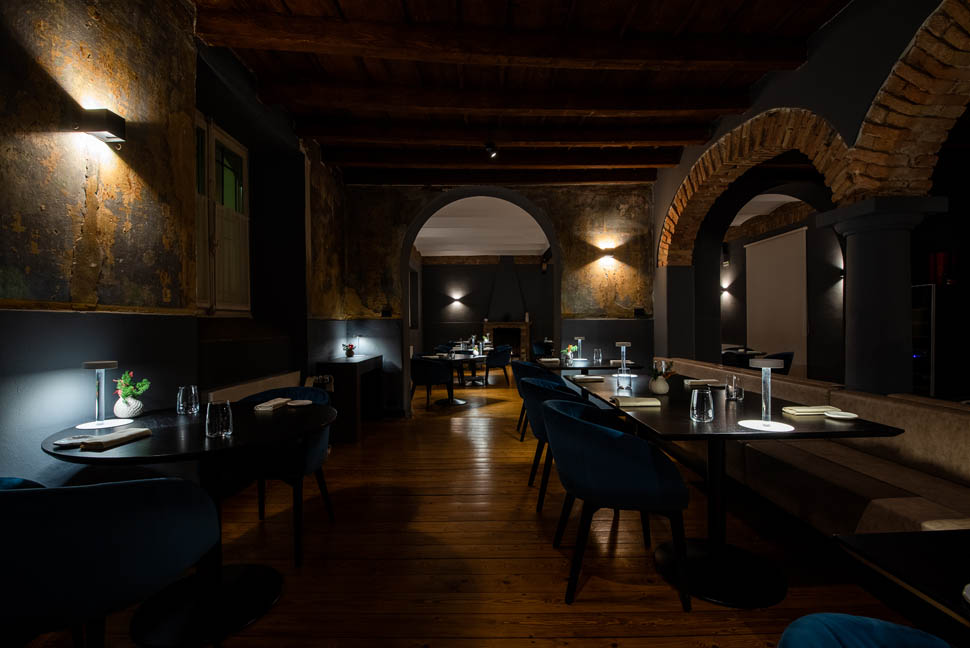
Minchillo, who moved from unresolved benches in Vieste to prestigious ones in Colorno, found his passion confirmed at Alma, both in his head and his heart. His internship lasted very little. A chef who left La Palta's kitchen shortly after he arrived, leaving the first courses exposed, forced him to shed the rookie's apron quickly and earn the coat of experience. We can imagine that Chef Mazzocchi wasn't just a bystander and that some wing flaps directed him towards the introverted Apulian boy. What a better opportunity to be corrected and 'forcefully' absorb the experience of the teacher. Six months that felt like years, or have they flown by? What matters is that today he can make you soar with risottos and filled pastas. Any mention of a dish we'll discuss shortly is purely coincidental.
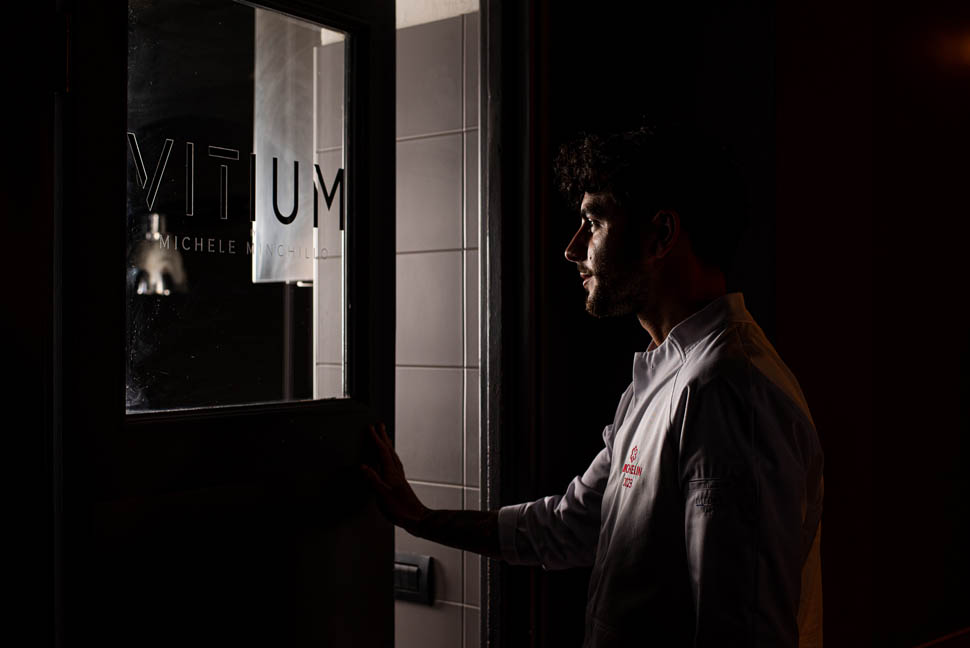
'Let's say Isa (Mazzocchi) is responsible for my conviction that I can push, make it, become a chef. I have to thank her a lot.' From the low plains of Piacenza to Dubai, there seems to be an abyss. Yet, in the plan of a young man who never wanted to be a salaried chef, the Emirates Towers - or any other restaurant-office - was somehow anticipated.
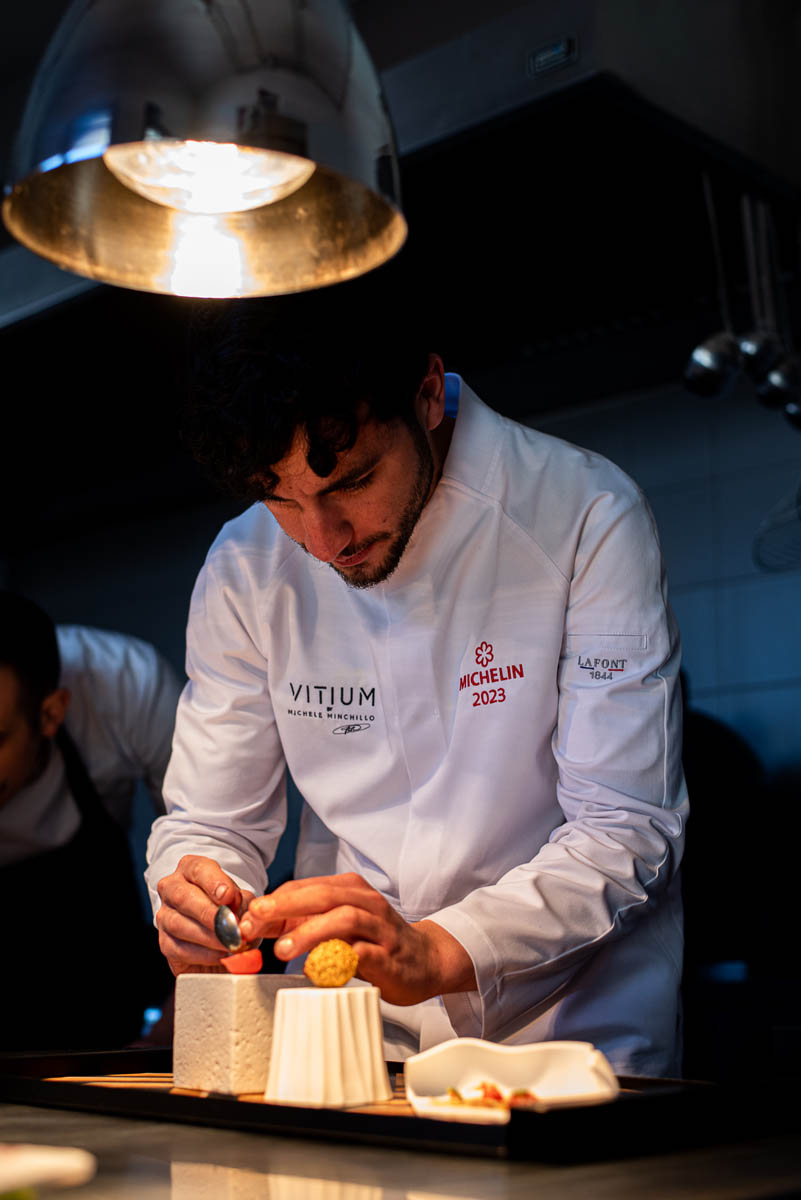
"In fine dining atop the Emirates Towers, I learned to place orders in another language, to manage the staff since I had the role of junior sous chef. Everything there was perfectly organized and divided into departments. I learned mainly managerial aspects, things that gave me a more solid foundation for opening my restaurant. Today, I'm certainly not an experienced restaurateur, but I know how to grow and maintain balance." In a restaurant that feels like a little piece of New York, there's no room for ego show-off, for 'I wish,' for 'what if,' or even for 'get lost.' Few but good. If a space remains empty, you don't wait for the person in charge to cover it. You cover it yourself, because that's the reality.
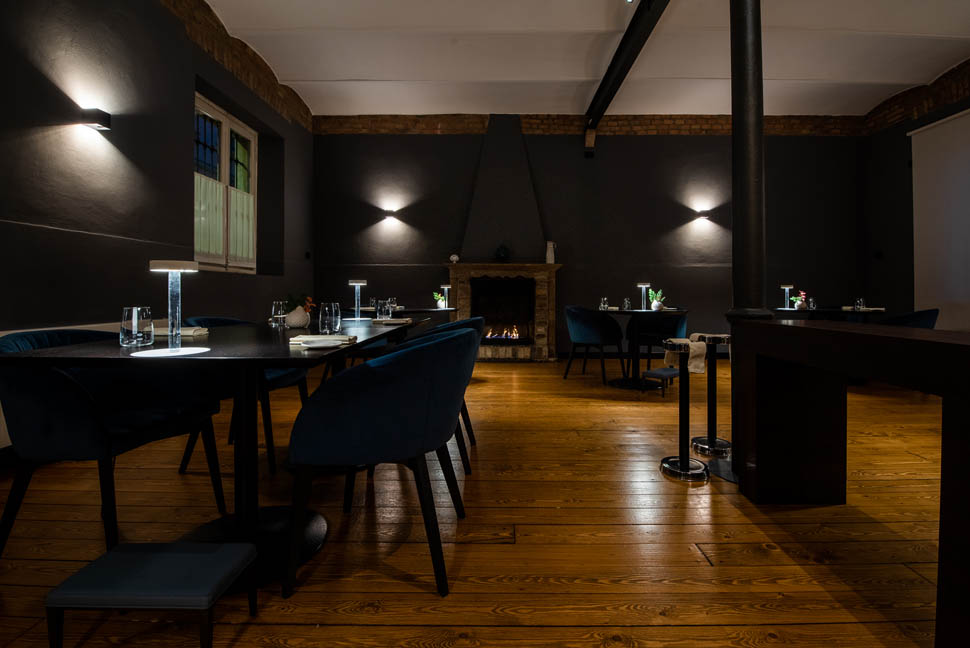
The venue
"We're a small establishment with limited resources. Three in the kitchen and two in the dining area, with extra staff on Fridays, Saturdays, and Sundays when the workload is heaviest. The change in the younger generation's approach is clear. They are attracted by the world of hospitality, but when they realize the rhythms and work, they lose their motivation and passion. It takes enthusiasm but also balance. The decision to only open for dinner during the week reflects this, allowing the staff to have time for their own activities, like going to the gym. This also applies to me. This year, I let them choose their vacation, and they decided to take three consecutive weeks off in August, avoiding closure in November." Is the restaurant business a monster to flee from? Well, without dialogue, contradiction, and openness, everything eventually becomes, if not monstrous, at least unbearable.
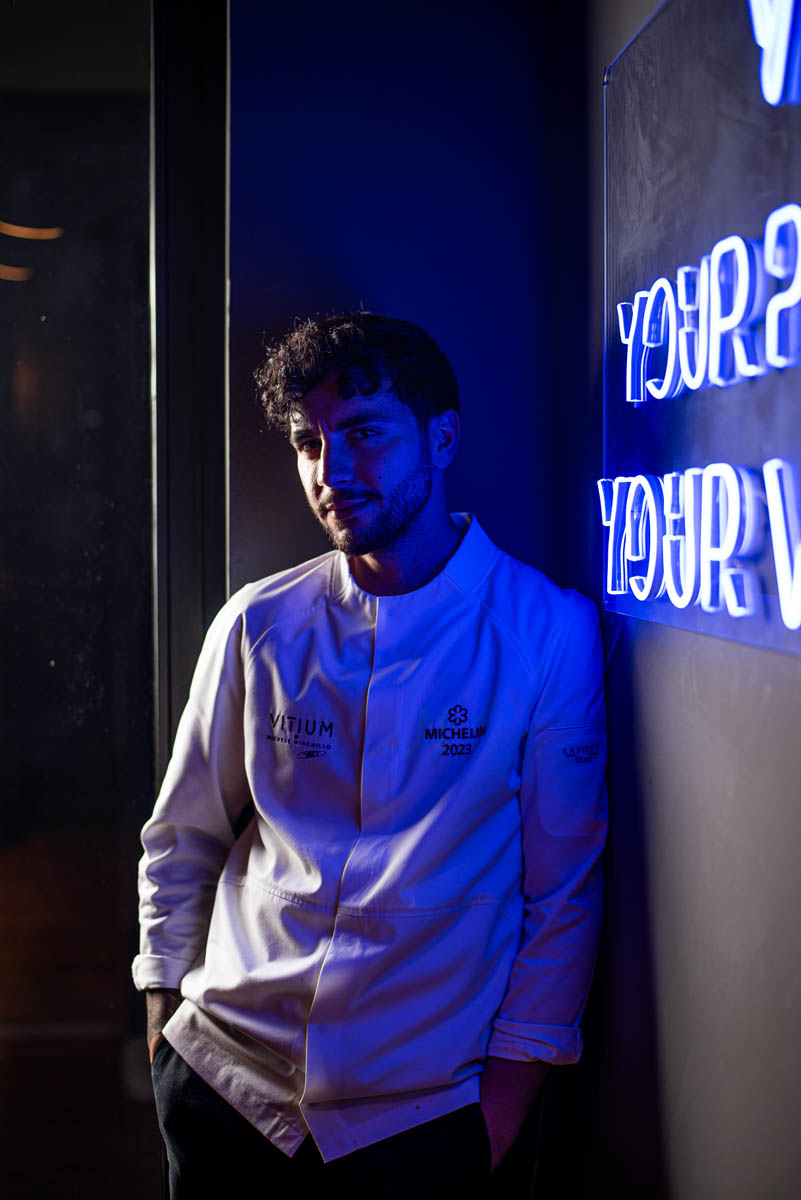
The prophets of the end of fine dining are rubbing their hands, licking their fingers. Let them enjoy their final meal. A new generation of "top chefs" is stepping forward, capable of astonishing and creating pleasure without being concentrated solely on the cuisine. These chefs don't have someone backing them with capital and then reaping the rewards. They have the guts, though. Their shoulders will broaden and strengthen. If these chefs could also break free from the legacies of excessive amuse-bouches, the subscription to the trio of pre-dessert, dessert, and petit four, the bread that "we make ourselves" but then can't do well, from rituals that aren't even tradition, they would have more time to explore something of their own identity, as well as keeping their finances in check and nurturing their staff. By the way, Michele Minchillo bakes his own bread, and it's really good and well-balanced. The sourdough won't make you curse under your breath, "my goodness." "I'm not a chef consumed only by the kitchen. I've evolved, both due to circumstances and by choice. Life isn't just about spending 14 hours in the kitchen. Even this year, I'm wondering, what should I do on December 25th? Should I close or stay open? It's been a while since I celebrated Christmas at home."

The dishes
Outside, an historical building; inside, a New York loft. The chef says he observed a lot and borrowed a lot in New York. At first glance, there's nothing frenetic about Michele, not even a hint of the typical Puglian theatricality. And excuse the stereotype. It's just that he raced ahead like a silent sprinter. In New York, he worked at Aska. It's there that he learned to be a bit of wood and a bit of iron.
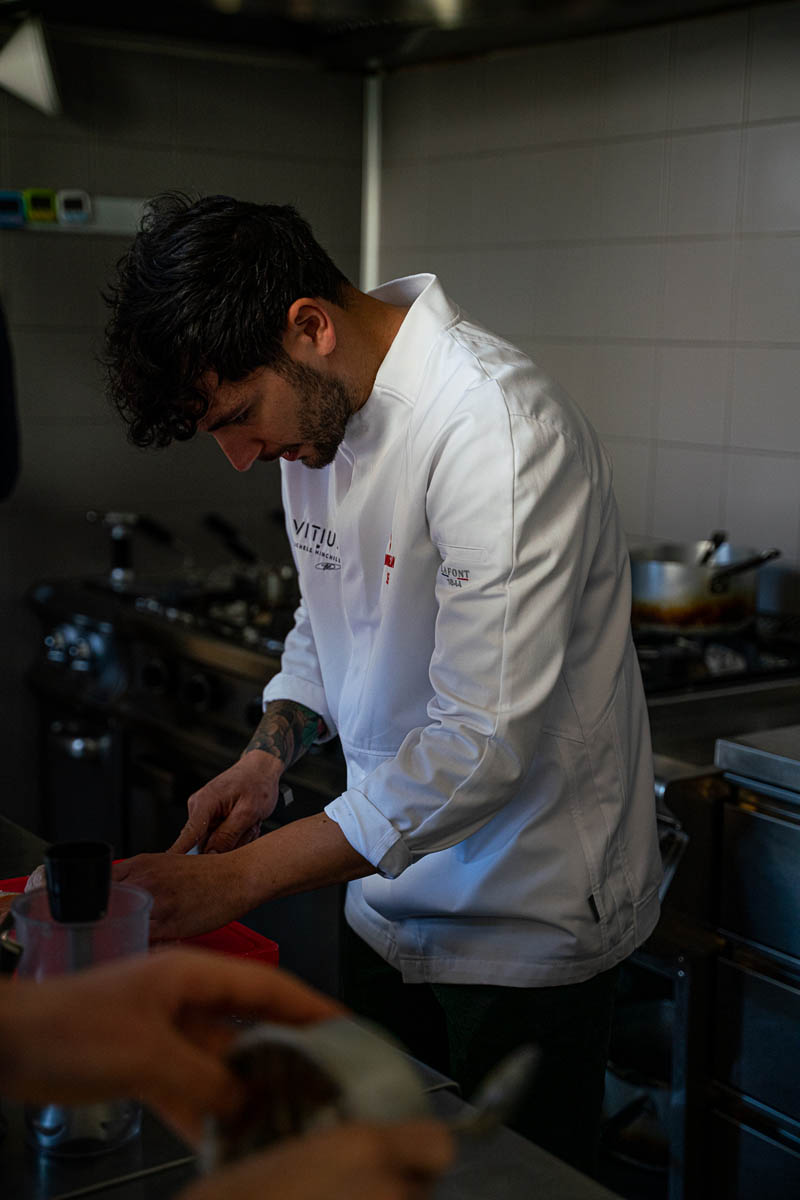
In the kitchen, trends exist, but Minchillo is a master of evasion. For him, it's simple, as he uses as many techniques as possible continuously. Spherification, grilling with the Green Egg, low-temperature cooking, osmosis, and the use of a Pacojet. "In the future of fine dining, we're returning to classicism. There will no longer be dishes conceived without considering the changing tastes of the customers. It will still take time for 'no waste' to be fully understood, they will realize it in many years. If I were to start doing it now, I'd close shop in a couple of months." Classic elements are also present in the menu we tasted: amatriciana, cacio e pepe, and a classic Chinese dish, Peking duck. Three dishes where the depth of flavor goes far beyond typical trattoria dishes. The first is a spherification and a single bite. Not to mention the dedicated packaging, which is stunning and evokes a futuristic thought.

The second is a refreshing twist on the Roman recipe, much creamier and with shrimp tartare, three different peppers, and lime. Does it align with the idea of refreshing lightening? Yes, that's why it wasn't our favorite dish. The third is something entirely different. No extended cooking, just grilled duck breast with accompaniments that transport us to the East: a dumpling filled with thighs and a sauce that replaces the typical glazing with fusion twist.
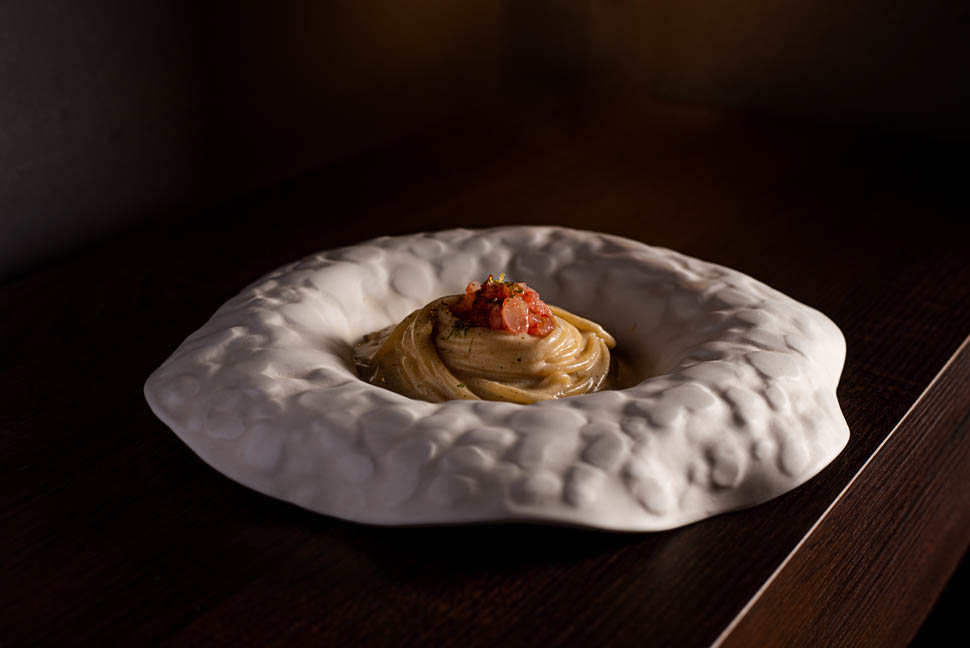
Now, let's talk about the dishes that stayed with us for days beyond the meal. Michele's taralli are like works of art that you instinctively refuse to bite into because they're so epic. No one can make or touch them except the chef. The interweaving is hypnotic, and each bite is a rollercoaster. Perhaps this is the essence of Michele's cuisine: a rollercoaster. It's filled with expectations, cruising speeds, twists, frenzied descents, and sudden turns.
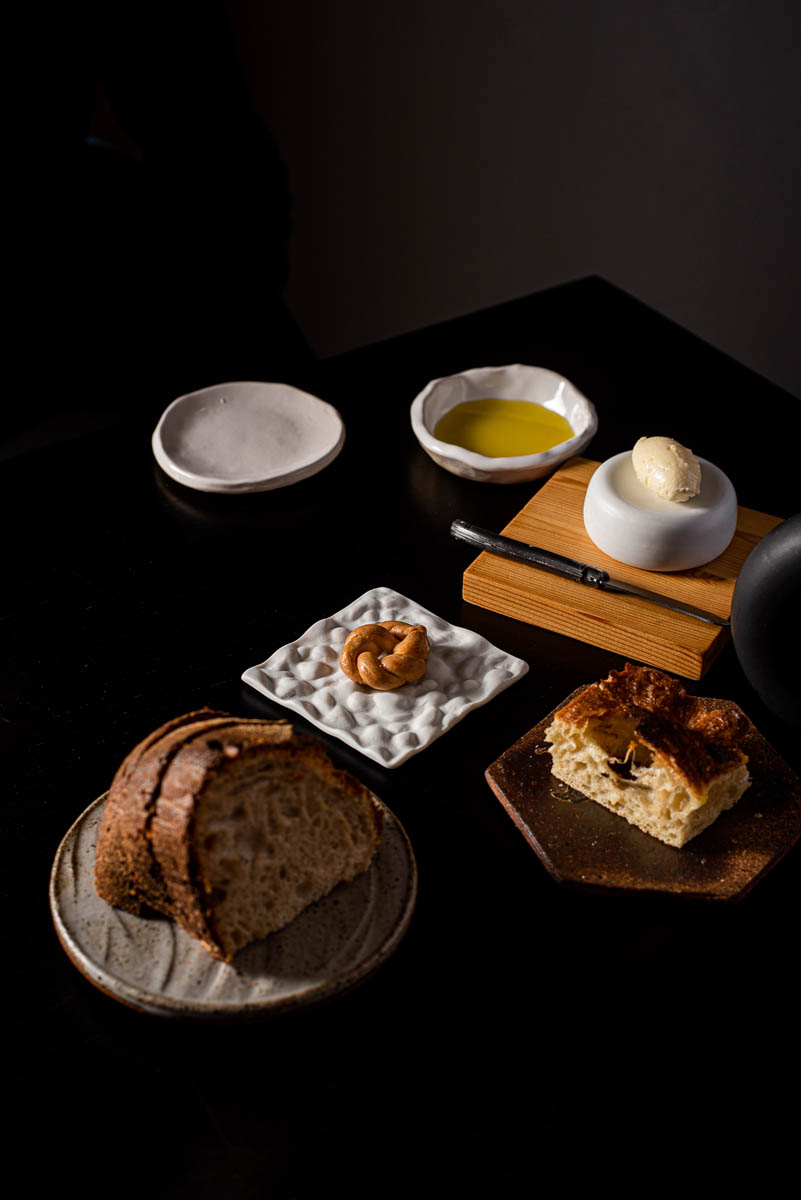
Lettuce is a humble and common vegetable that is rarely appreciated. More often than not, it's bagged. Porcini, on the other hand, are the kings of the forest, the jewels of the land, dispensers of moisture. The symbiosis is precious, the green leaf ordinary. Michele has managed to bring them together in the Seasonal Salad, which is better than a Disney movie where two heroes from different social classes meet and fall in love. The porcini are braised with red onion and citrus. They are placed warm at the bottom of the plate, while roasted lettuce ice cream is on top. In the middle, there's lettuce, acidic radish, and fermented daikon. We allowed ourselves to suggest a name change to encourage customers to order it. The name of the mushroom could be included in the dish's description, or more creative solutions could be explored: Porcini and Lettuce / Mr. Porcini & Mrs. Lettuce / The Forest in the Garden. Basically, it's too good of a dish to have such an ordinary name.
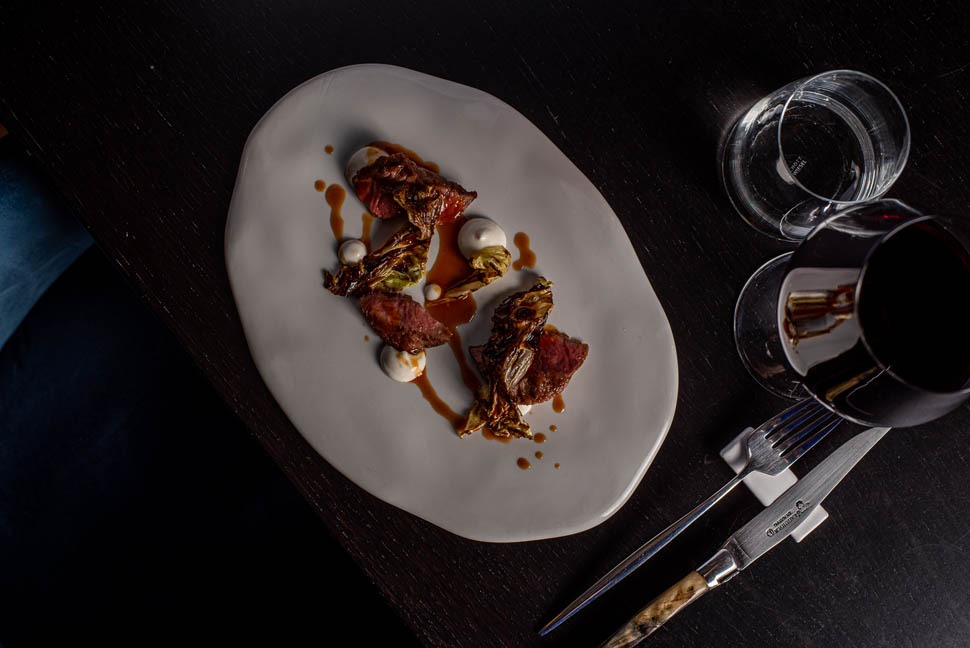
As real sweetbread addicts, we couldn't help but mention it. Sweetbread, oyster, and green apple - that's the name of the dish. Here, the beloved heart gland is slow-cooked and glazed with oyster concentrate. The green apple in osmosis balances the butteriness and savoriness of the bite with tannic acidity. It's a blend of techniques resulting in an aromatic pearl of intensity.
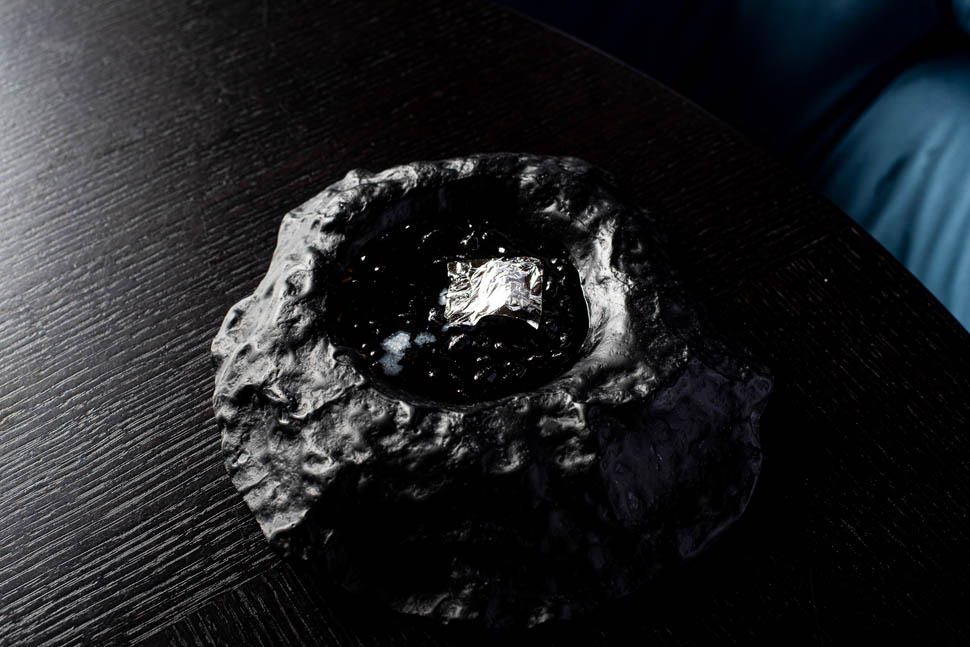
Let's move on to the pasta. Stuffed. Ravioli, Genovese ragù, Salva Cremasco DOP, and mustard is the chef hidden inside the grandmother, the technical creativity concealed within comfort. The pasta bite is a classic – thanks also to Isa Mazzocchi from our side – the filling is the well-executed 'Genovese,' and the mustard is made from tomato, pumpkin, and figs, giving a sweet pungency. The brilliant touch is the caramelized onions reduction, along with the typical cheese from the region, cheering us up and saving us from the preconceived heaviness of the dish, offering volatile acidity and a hint of bitterness.
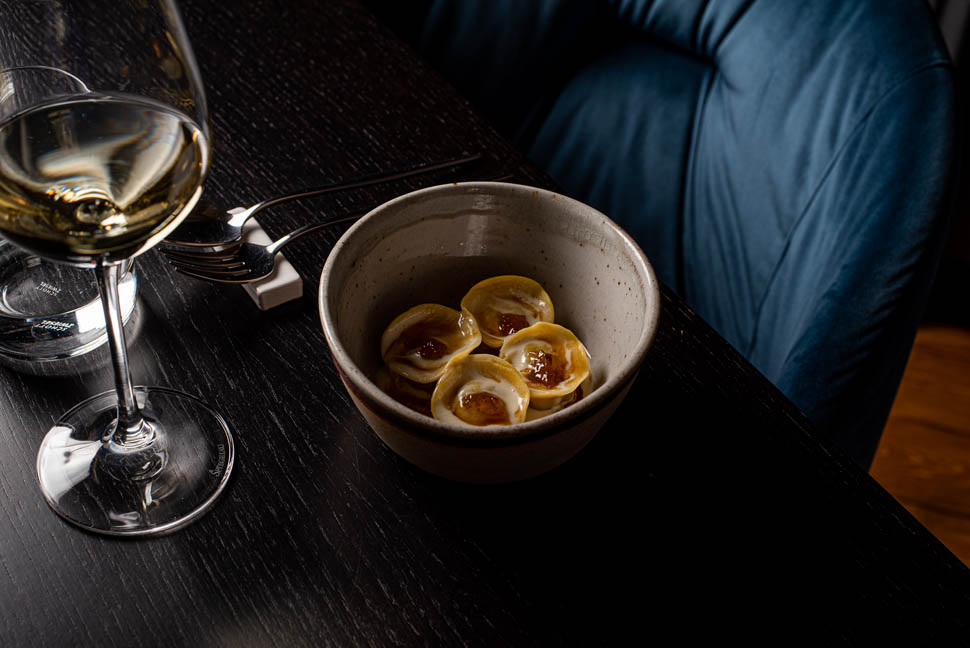
We conclude with one of the best desserts we've had recently. We see dessert as part of the overall culinary journey. It shouldn't be the plate you finish with; instead, it should be the one that keeps you in your seat. Zabaione, pistachio, celery, and licorice is a play of temperatures and textures, a diversified layering of opposing elements. The zabaione is a refreshing cloud when its usual form is an exhausting cream. The pistachio is presented in a double form, with crumble and ice cream separated by shaved celery, a bitter and refreshing soul in the dessert, and a stroke of genius, the element that, if missing, would make you say, 'good,' but when present, 'wow.' The licorice powder is the cushion for the sweet and alcoholic part of the zabaione, a slightly spicy element that tickles the palate.
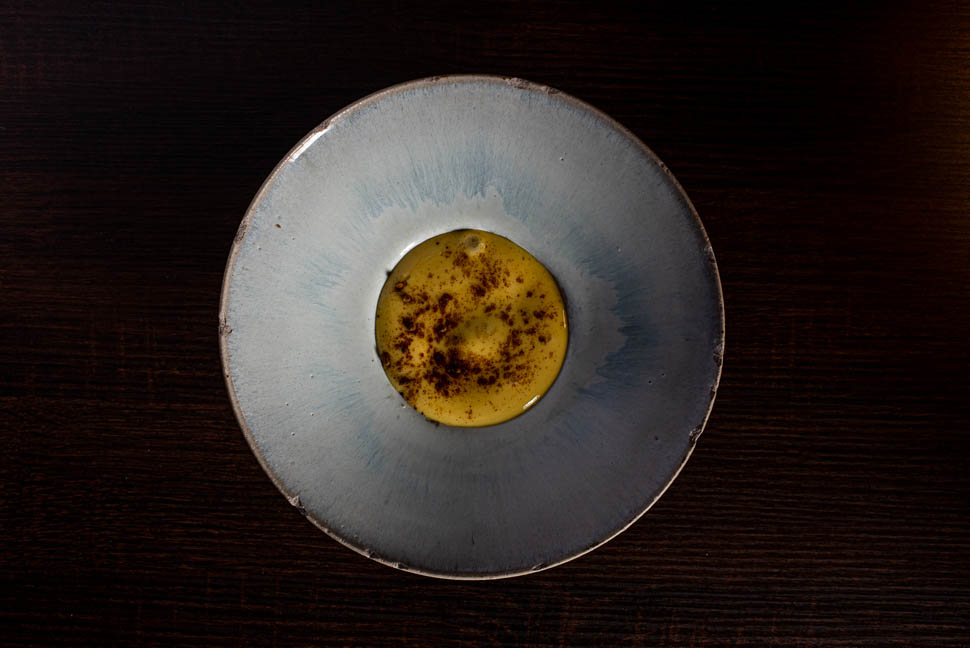
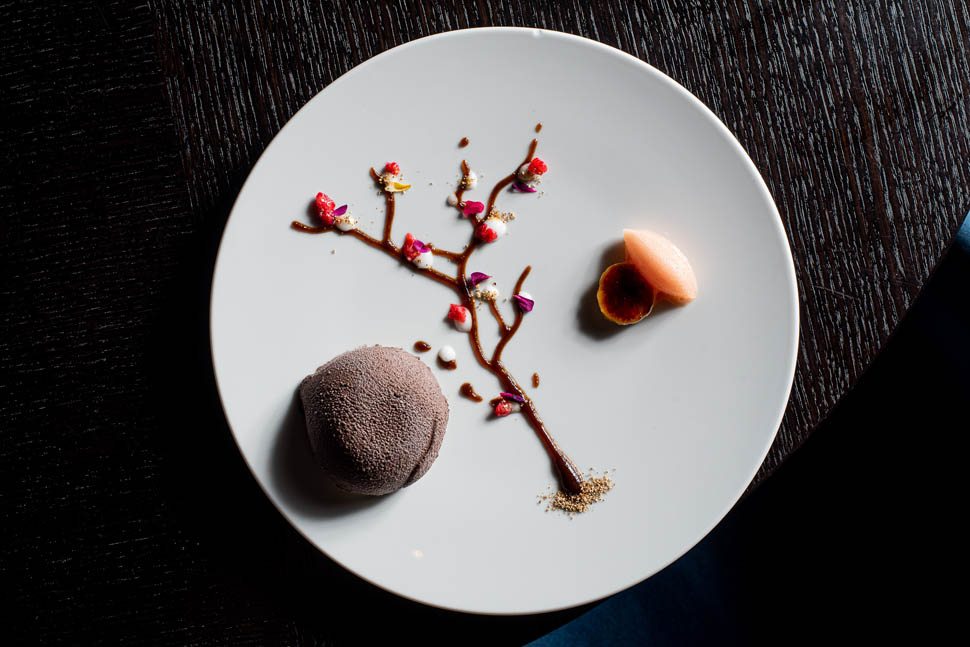
When we had looked online, the menu seemed quite tempting. But when it came to the wine list, our lower lip curled up. This is becoming a trend, as the young maître and sommelier, Jacopo Vico, explained. The Tristan Hyest champagne was one of the few things we were sure about and it didn't disappoint. The Cuvée Les Cotes Calcaires, with 50% vin de reserve, is a highly gastronomic champagne. Jacopo also selected a gem from Mount Etna, Vigneri 1435 by Simone and Salvo Foti, a pure Nerello Mascalese of incredible elegance and tension. If the new wine list includes more wines like this, then we're on the same page.
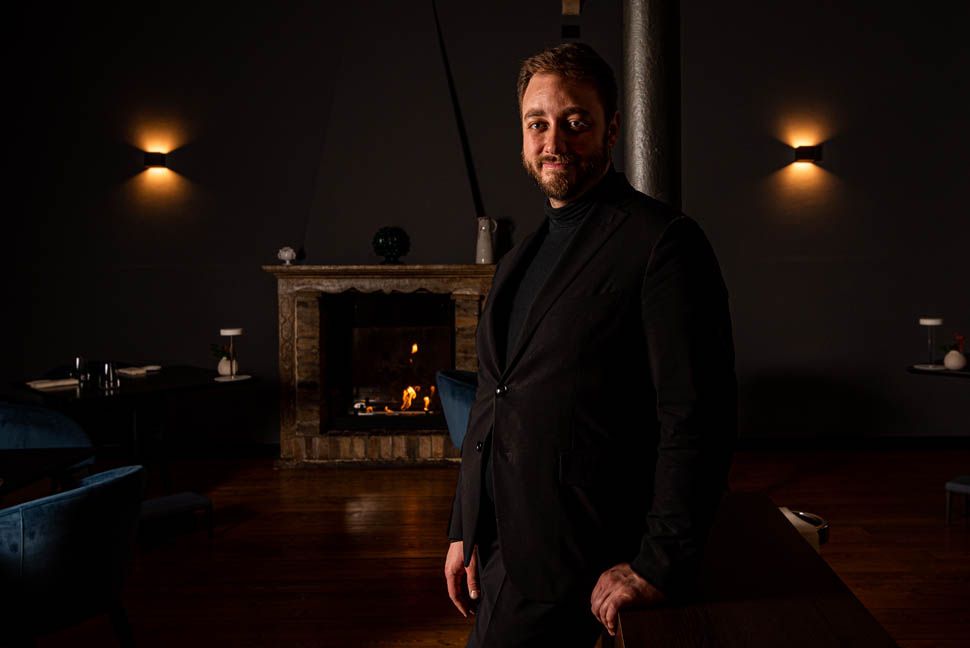
Address
Vitium
Via Ginnasio, 4, 26013 Crema CR
Tel: +39 0373 225703

